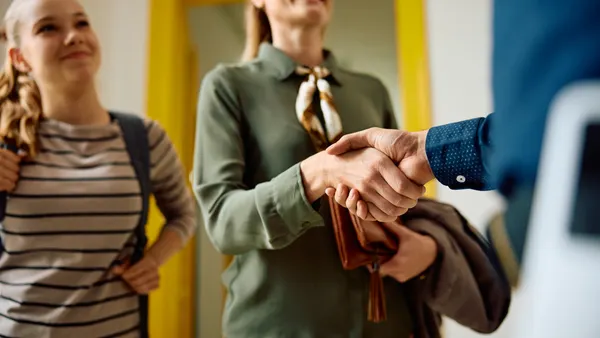Dive Brief:
- A panel discussion at the recent International Society for Technology in Education conference in Chicago focused on how to build a makerspace without pricey equipment, as well as how to entice an array of diverse students to making.
- Teachers shared ideas for schools with limited funds, including how to use materials from nature and trash, and building all prototypes with cardboard. One creative suggestion involved giving students broken animatronic toys to take apart as way of learning about common components in electronic products. Approaching local businesses and civic associations for donations of materials is another route.
- One hurdle besides cost is convincing school board members, often focused on raising test scores in urban and rural schools, of the value of makerspaces. Bringing students to board meetings, with their projects, to convey in their own words the 21st century skills they are learning can be effective.
Dive Insight:
Makerspaces — liberally defined as any dedicated area where students make things — has become almost synonymous with 3D printers. But how can schools without the funds for such high-tech gadgetry still come up with a winning makerspace? They might start by shifting the focus from trying to entice students by wowing them with the coolest, newest technology to getting them excited about understanding how things work and building things with their own hands.
Aside from leveraging the potential of found objects — "cardboard challenges" come to mind — administrators can reach out to nearby factories to request that one of their engineers give students a first-hand lesson, or allow students to go there on a field trip to observe. Educators can use social media and Skype to connect students with inventors and engineers who are farther afield. Local libraries sometimes have tech kits for community use (Or, if not, the Institute of Museum and Library Services offers grants for such purposes.) One teacher noted an important step was to become best friends with your school custodian.
Another way to shift the focus to the joy of making something with your own hands is to get teachers to help. Administrators might encourage them to tap into the pride and spark of creativity they themselves feel when making something at home--almost certainly without the help of laser cutters and the like — whether a craft project, favorite recipe, or a beaded necklace. That has helped some teachers see a path to sharing that excitement with students.
A common misstep in connecting students to makerspaces is assuming that all students want to be "makers." Recent recommendations from Drexel University on how to foster a making culture in schools suggested avoiding terms like "geek" and "hacker," which may turn off students who don't see themselves in that light. The language surrounding school makerspaces can be especially important when trying to attract girls. When it comes to teens, encouraging them to take the lead in planning a makerspace, as well as their own learning within it, can be key.





 Dive Awards
Dive Awards







